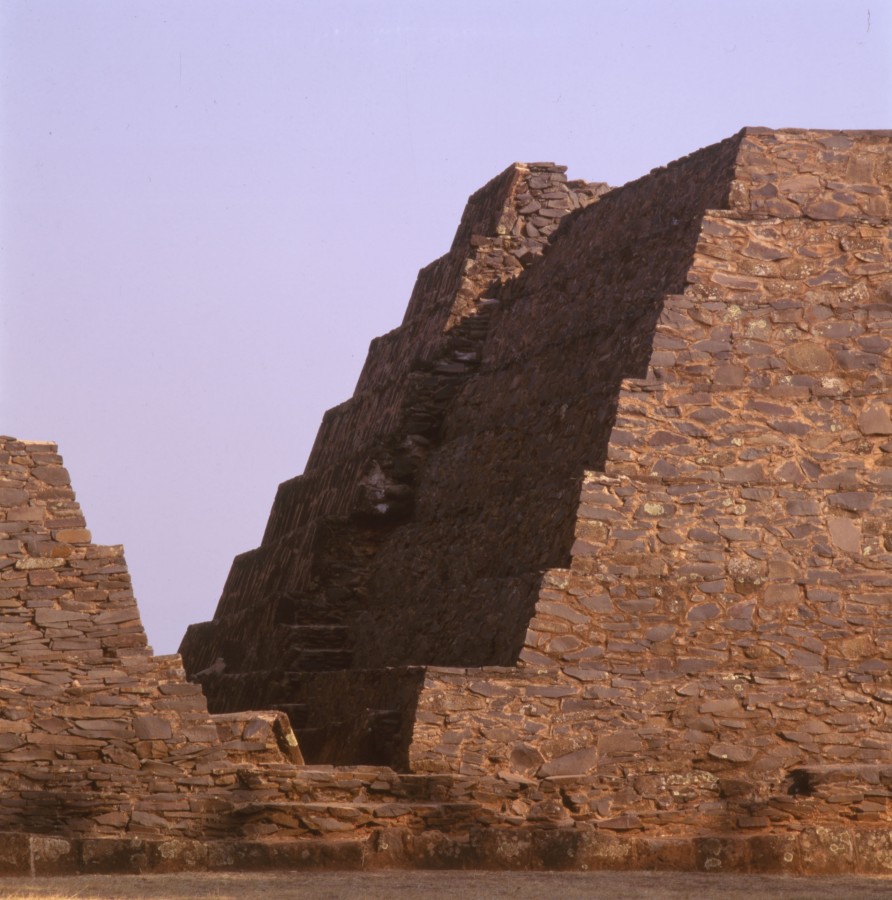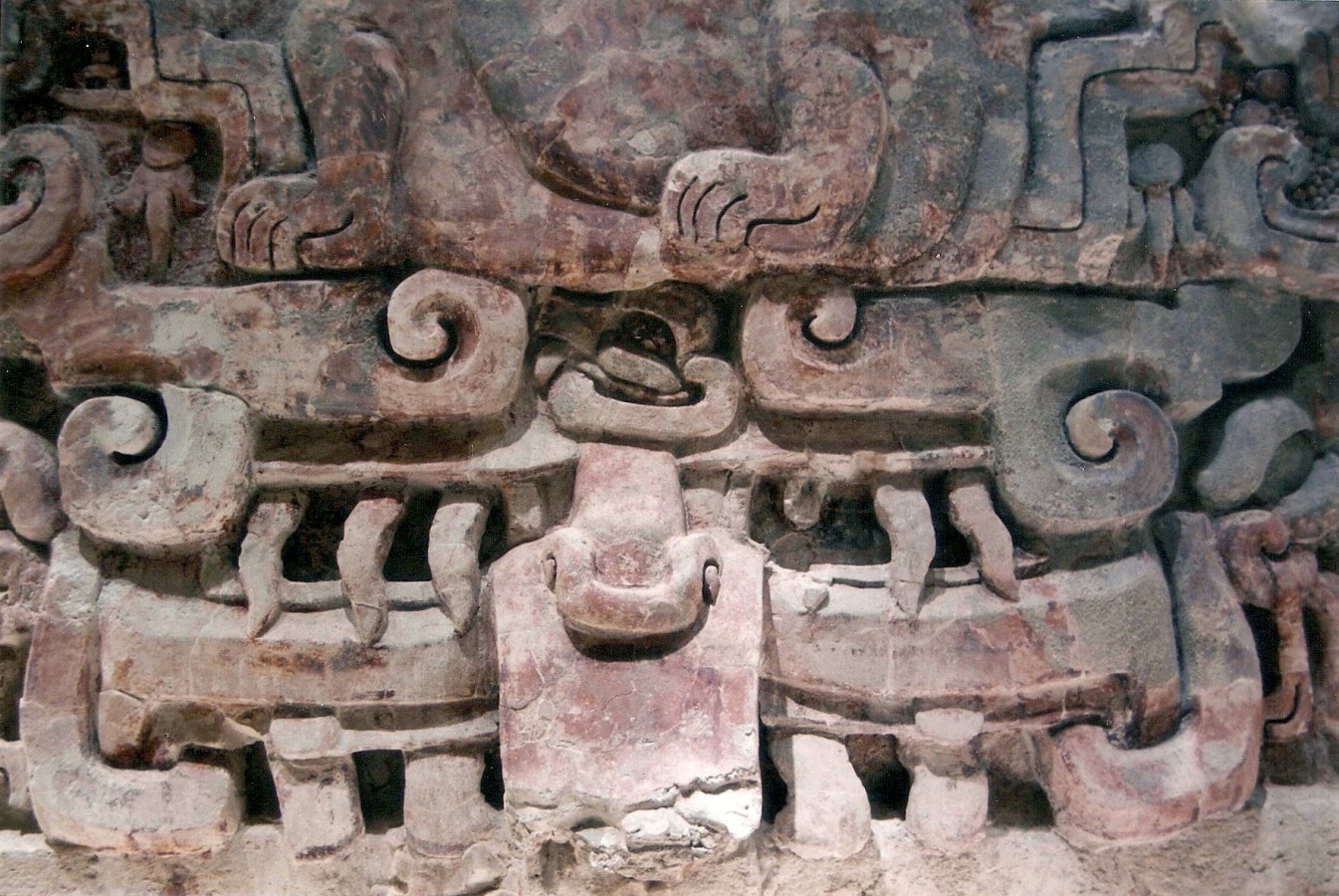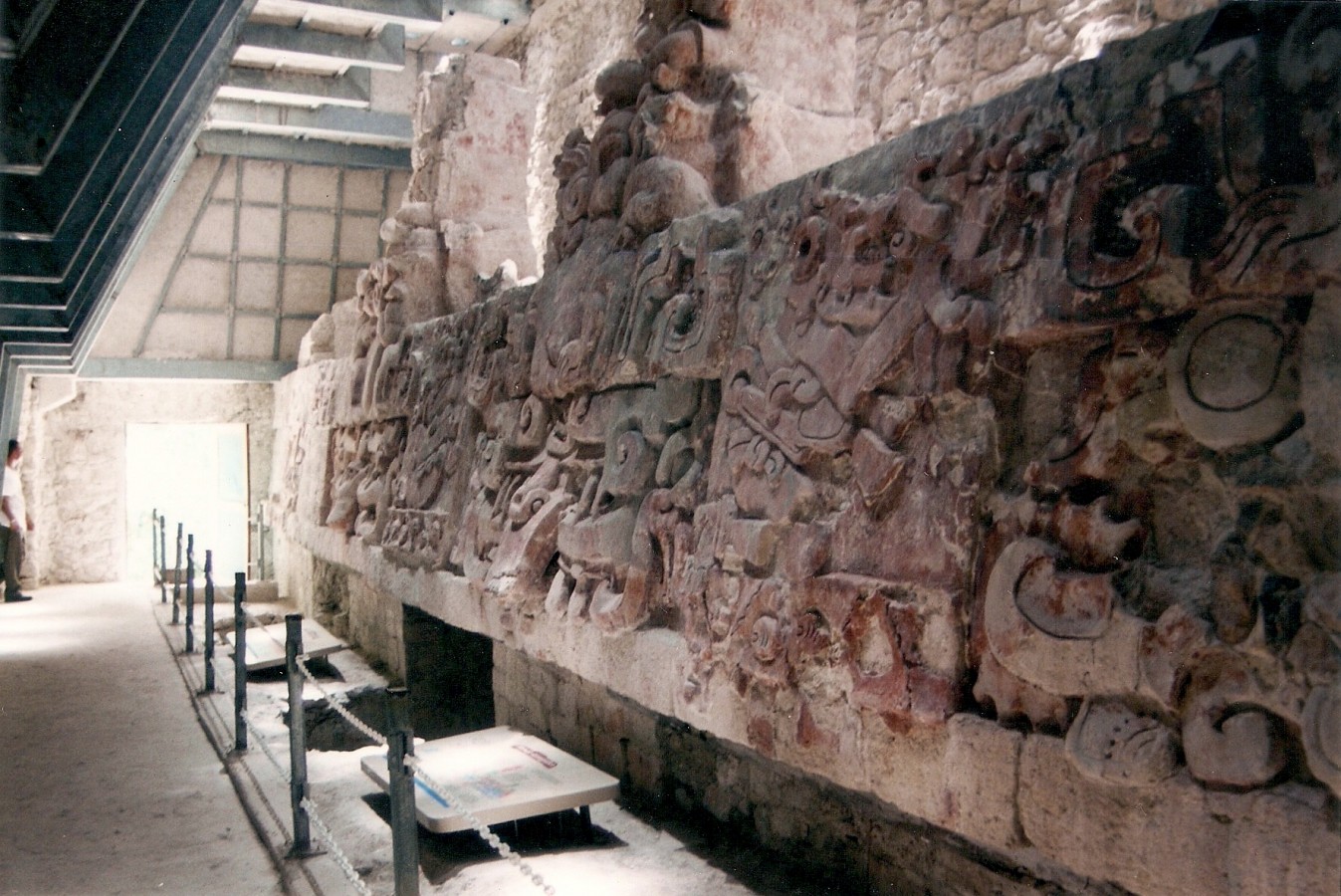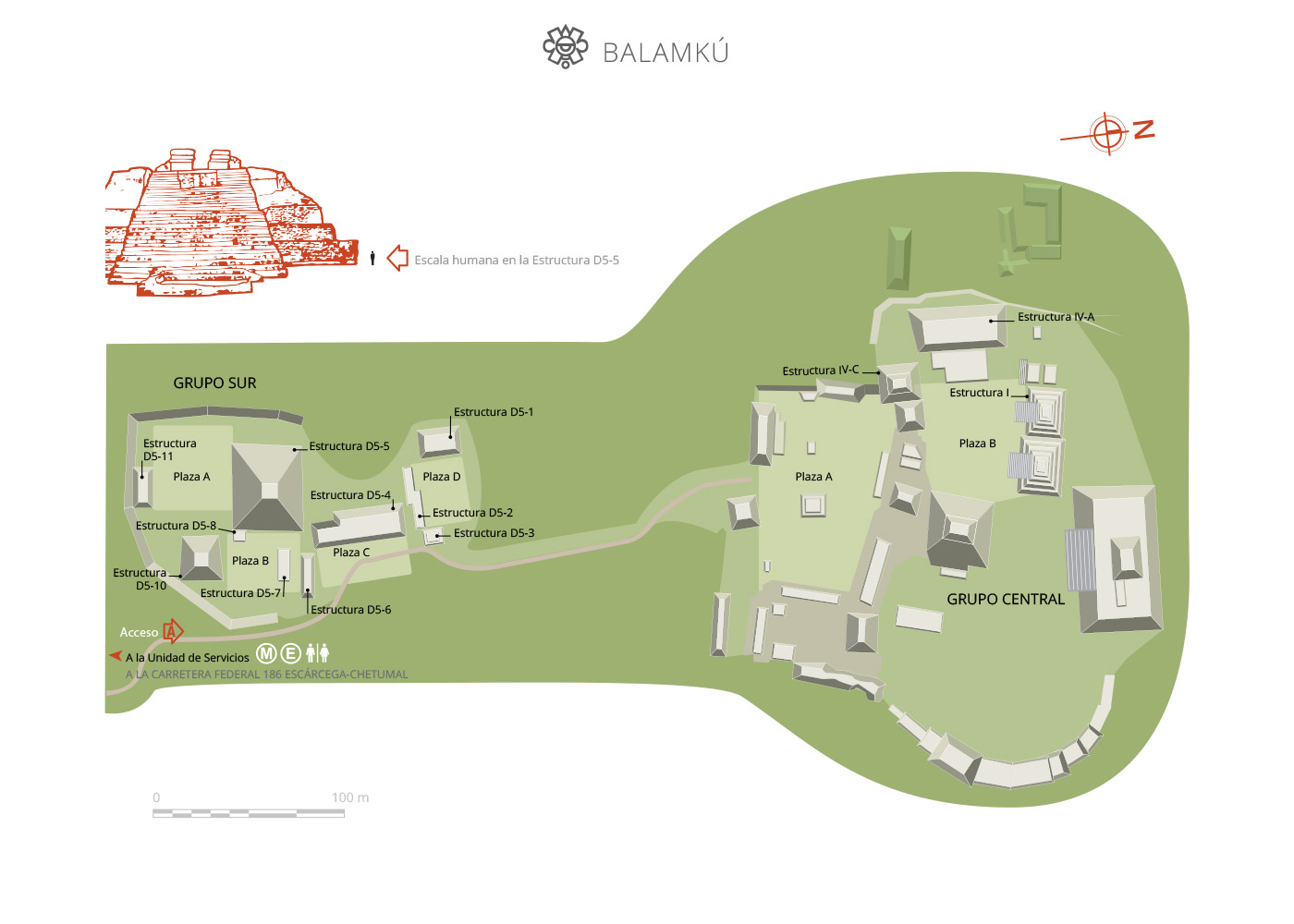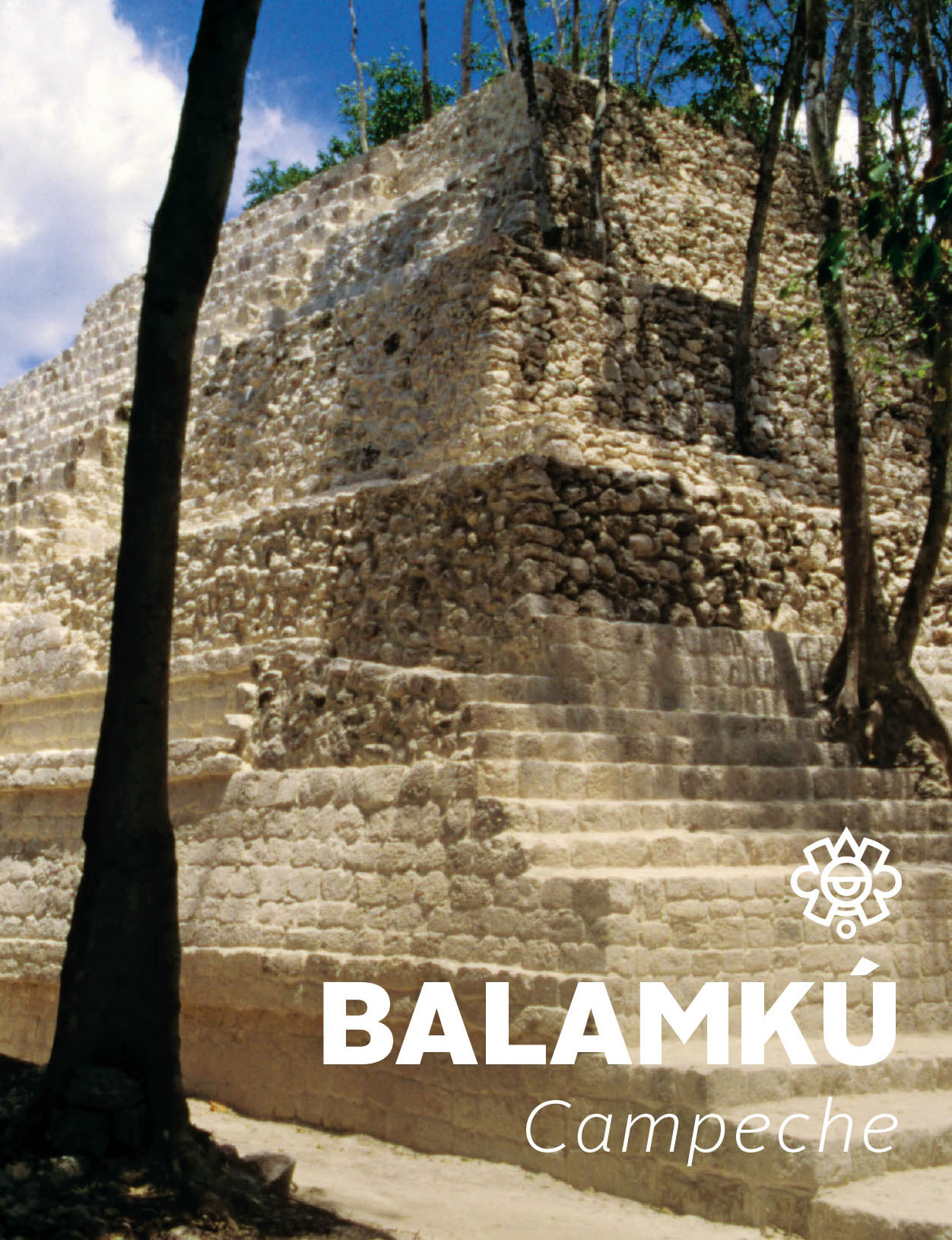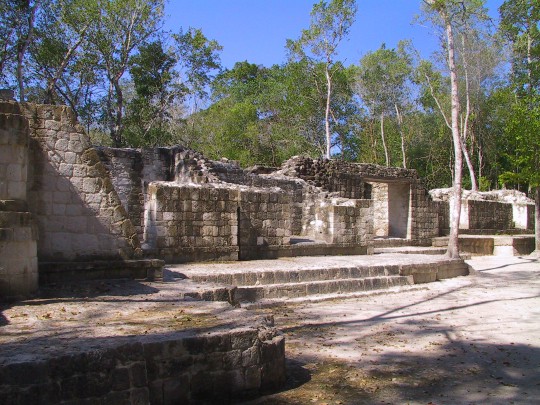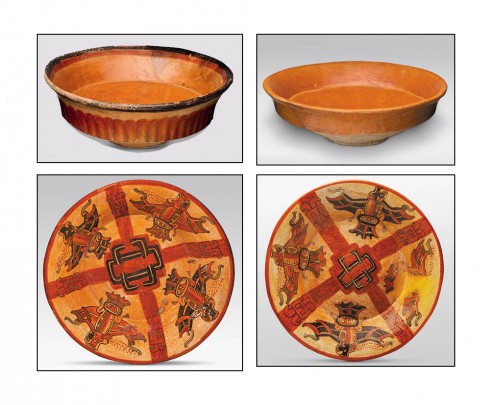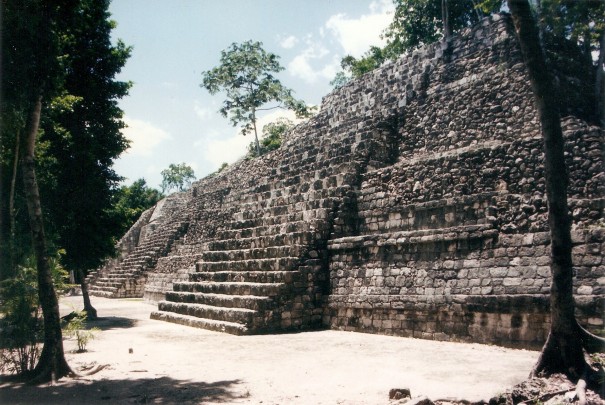The polychrome molded stucco frieze of the Central Group, unique in the Mayan area,
is proof of the artistic mastery of its ancient inhabitants.
After being overlooked by specialists for many years, Balamkú was only officially discovered in 1990 when archeologist Florentino García Cruz, from INAH’s regional office in Campeche, followed up reports of the ransacking of an archeological zone that was unknown to that point, and had only been visited by locals. The looting was so extensive that it left exposed a large part of the molded stucco frieze that was mainly painted in red and black. Its name derives from the words “balam” and “kú”, which in Yucatecan Mayan mean “jaguar” and “temple” respectively, thus the building is known as the Temple of the Jaguar. The name is inspired by the feline designs found on the frieze.
Balamkú is a small site and consists of three main groups of buildings and their immediate surroundings, covering 0.4 square miles in total. So far, only the South and Central complexes have been explored and restored by experts.
The Balamkú site shows evidence of a long period of human occupation, from the Middle Preclassic (600-300 BC) until the Late Classic (800-1000 AD). During its early years it was strongly influenced by the cities of the Petén region (such as Calakmul, Nakbé, El Mirador, Uaxactún and Tikal), but between 600 and 1000 AD it came to bear a greater resemblance to the site of Becán, in the Río Bec region.
The Southern Group of buildings consists of 13 structures of varying sizes that were used for different purposes, and are distributed around four civic and ceremonial plazas. However, it should be noted that no more than six or seven of these constructions ever existed at the same time. All of the structures in this complex have been explored and most have been completely restored.
The earliest human occupation of this area of Balamkú can be dated to the Middle Preclassic and continues without interruption until the Late Classic, when it was abandoned and only briefly reoccupied in around 1200 AD.
- Balamkú is a pre-Hispanic city linked to the Petén region in its earliest phase of occupation, and subsequently with the Río Bec area toward the end of the Classic period.
- The center of the pre-Hispanic settlement consists of four main groups of buildings where civic, religious, political, administrative and residential activities took place around the beginning of our era.
- The decoration of the most impressive buildings' façades reveal the ideological and dynastic importance of the local elite.
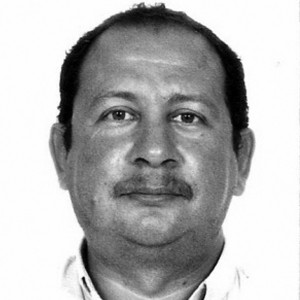
-
+52 (981) 816 8179
-
This email address is being protected from spambots. You need JavaScript enabled to view it.
-
FACEBOOK
-
TWITTER


